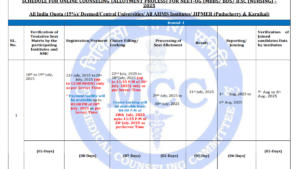Force Formula
In Physics, The concept of force formula is one of the most important outcomes of newton’s law of motion. According to the force formula, the force is equal to the mass times the acceleration. Therefore, to calculate the force, all we need to do is multiply the mass by the acceleration. Read the Force formula with velocity, in terms of momentum, derivation, and units with sloved examples.
What is the Formula of Force?
Force is a factor that has the power to alter an object’s motion. A force can cause an object with mass to accelerate when it changes its velocity, for as when it moves away from rest. An obvious way to describe force is as a push or a pull. the formula for force is F=m*a.
Formula of Force in words
Force is a vector quantity, implying it has both magnitude and direction. Newton’s second law defines force as the “product of a body’s mass and acceleration.
Force Formula Physics
The vector product of mass (m) and acceleration are used to express the amount of force (F). Mathematically, the equation or force formula Physics can be written as
|
Force(F) = Mass(m) × Acceleration(a) F = ma |
where m = mass of the object,a= acceleration, F= Force,It can be expressed in Newton (N) or Kgm/s2.
Force Formula with Velocity
The formula for acceleration or change of velocity derived from the force formula is,
The formula for acceleration (a) is,
a = v/t [ Where velocity = v. t = time taken]
Therefore, the Force formula can be defined as:
F = mv/t
Force Formula in terms of Momentum
The inertia formula is known as p = mv, which is also known as momentum.
As a result, the force can be defined as the speed at which momentum changes.
F = p/t = dp/dt
Finding the force, mass, acceleration, momentum, and velocity in any given scenario is made easier by using force formulas.
Force Formula Unit
According to Newton’s second law of motion, force is defined or quantified as the product of mass and acceleration.
- In the SI system: The unit of mass is the kilogram, abbreviated as kg, and the unit of acceleration is m/s2 in both the SI (International System of Units) and the MKS systems. As a result, the unit of force is often known as Newton or N, or kg m/s2.
|
Newton: The amount of force acting on an object of mass 1 kg causing an acceleration of 1 ms-2 is called 1 newton (N) force.
1 N = 1 kg/m/s²
|
- FPS System: The units of mass and acceleration in the FPS system are pounds or lb and feet per second squared, or ft/s².respectively. The poundal or pdl, often known as the FPS unit of force, is hence equal to lb-ft/s2.
- CGS system: The units of mass and acceleration in the CGS system are grams (g) and centimeters per second (cm/s², respectively). Therefore, the CGS unit of force is Dyn or g cm/s²
|
Dyne: The amount of force acting on an object of mass 1 g causing an acceleration of 1 cms-2 is called 1 dyne (dyne).
1dyn = 1g.cm/s²
|
Derivation of Force Formula for Class 10
The dimensional force formula is expressed as, M1 L1 T-2
In which, M = Mass, L = Length, and T = Time
Earlier we know that we can obtain the force applied on an object by multiplying the mass of the object and acceleration. The force formula is F=ma.
Or,Force = Mass × Acceleration
or, we know that acceleration is written as acceleration = velocity × [time]–1 = [LT-1] × [T]-1
So we get the Dimensional formula of acceleration is [LT-2]
As per newton’s second law, Force = mass ×acceleration
Or, F = [M] × [L1 T-2] = M1 L1 T-2.
Hence we get the Dimensional force formula M1 L1 T-2.
Net Force Formula
The net force is the total of all the forces that act simultaneously on an object. The total of all the forces exerted on an object is known as the net force. A mass can accelerate due to net force. A body is subject to another force whether it is at rest or in motion. The total of N forces exerted on an item is represented by the equation below.
The net force formula is given by
FNet = F1 + F2 + F3 ….+ FN
where a body is being affected by forces F1, F2, and F3.
When a body is at rest. the net force formula is
FNet = Fa + Fg
Where Fg is the gravitational force and Fa is the applied force.
Centrifugal Force Formula
Each time we move in our daily lives, we experience centrifugal force. We feel it when an airplane turns or when we are driving around a corner. When the washing machine goes through a cycle or when you ride a merry-go-round, we can observe it. It’s possible that it will even give spacecraft and space stations artificial gravity in the future. Due to its near resemblance, some individuals mistake centrifugal force for its opposite, centripetal force. They might be thought of as the two halves of the same coin. As opposed to centrifugal force, which is defined as “The apparent force, centripetal force is defined as the component of force acting on a body in curvilinear motion, directed toward the center of curvature or axis of rotation.”
The Centrifugal Force formula is expressed as,
F = mv²/r
Where F is the centrifugal force, m is the object’s mass, v is the object’s speed or velocity, and r is the object’s radius.
Horizontal Force Formula
A horizontal force is defined as a force delivered in a direction perpendicular to the horizon. There are two parts to the force applied to a body: a horizontal component and a vertical component. The horizontal component of the force, as its name implies, is directed parallel to the surface, and the vertical component is directed perpendicular to the location of the body. In nature, almost all moving things have both vertical and horizontal components of force.
A football player’s hit causes the ball to move in one of two ways: either it rolls over the ground or it travels in the air along a curved route. In both scenarios, it is argued that a horizontal force is also moving with the ball. When the ball rolls over the earth’s surface, the horizontal force is evidently present. The horizontal component of the applied force is one of its elements. This proves that horizontal forces indeed exist in nature.
Force Equation
The equation of force is typically described by Newton’s second law of motion, which states that the force applied to an object is equal to the product of its mass and acceleration. Mathematically, this can be represented as:
Force (F) = Mass (m) × Acceleration (a)
This can also be written as:
F = m * a
Where:
- F is the force applied to the object (measured in newtons, N).
- m is the mass of the object (measured in kilograms, kg).
- a is the acceleration of the object (measured in meters per second squared, m/s²).
This equation reflects the fundamental relationship between force, mass, and acceleration, explaining how forces cause objects to accelerate or decelerate.
Force Formula Examples
1. If a force of 100 dyne acts on an object of mass 25 g for 5 s, how much velocity will it develop?
Ans: The Mass of the object, m = 25 g
The Force acting on the object, = F 100 dyne
The force formula expressed as F=ma
Or,a = F/m
Or, a =100/25 = 4 cm/s²
Velocity of object, u = u + at [ Here, initial velocity, u = 0 Time, t = 5s]
V =0+4×5 = 20 cm/s
2. The same force acting on two objects of mass 10 kg and 4 kg causes an acceleration of 4 m/s² in the first. What is the acceleration of the second?
Ans: Force applied on the first object = 10 x 4 = 40 N;
Therefore, force on the second object = 40 N
The force formula expressed as F=ma
Or, a = F/m
The acceleration force of the second object,a = 40/4=10 m/s²
Force ka Formula
द्रव्यमान (एम) और त्वरण के वेक्टर उत्पाद का उपयोग बल (एफ) की मात्रा को व्यक्त करने के लिए किया जाता है। गणितीय रूप से, समीकरण या बल सूत्र भौतिकी को इस प्रकार लिखा जा सकता है
बल(F) = द्रव्यमान(m) × त्वरण(a)
एफ = मा
जहाँ m = वस्तु का द्रव्यमान, a = त्वरण, F = बल, इसे न्यूटन (N) या Kgm/s2 में व्यक्त किया जा सकता है।
Formula for Force Physics in Simple Words
Newton’s Second Law of Motion, which states that the force acting on an object is equal to its mass times its acceleration, provides the formula for force. This can be written mathematically as:
F = m * a
Where:
F = Force (in newtons, or N)
m = The object’s mass, expressed in kilograms (kg).
a = Acceleration of the object (measured in meters per second squared, m/s²)









 NEET UG 2025 Counselling Dates OUT! Chec...
NEET UG 2025 Counselling Dates OUT! Chec...
 Dr MGR Medical University Results 2025 R...
Dr MGR Medical University Results 2025 R...
 GSEB HSC Science Supply Result 2025 Down...
GSEB HSC Science Supply Result 2025 Down...









